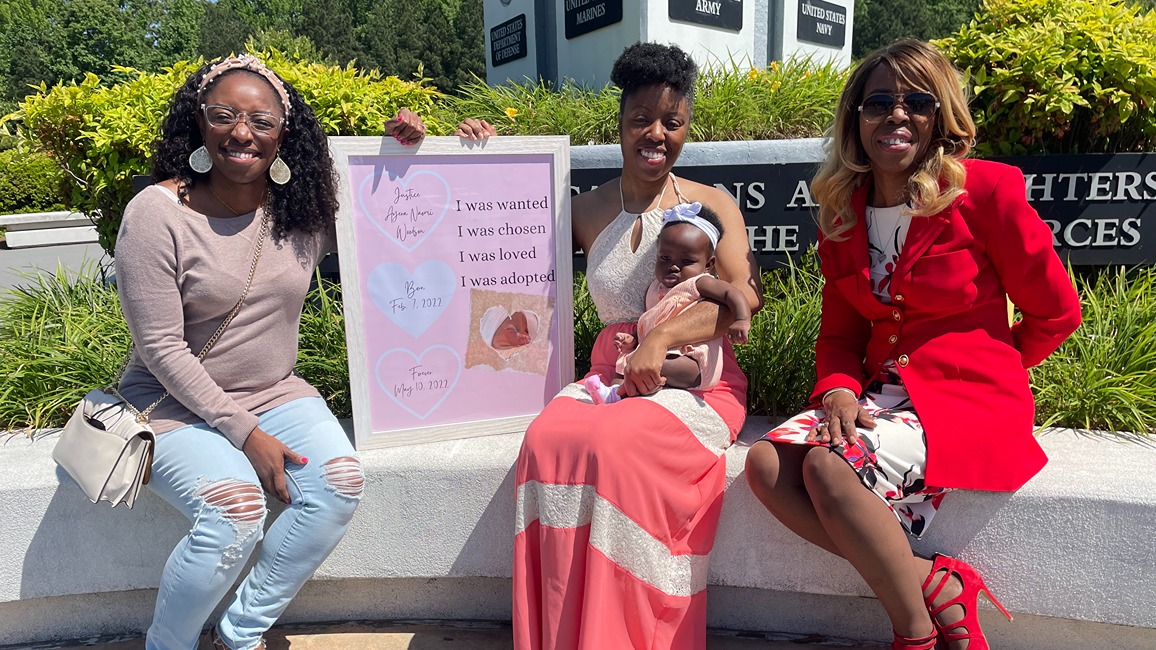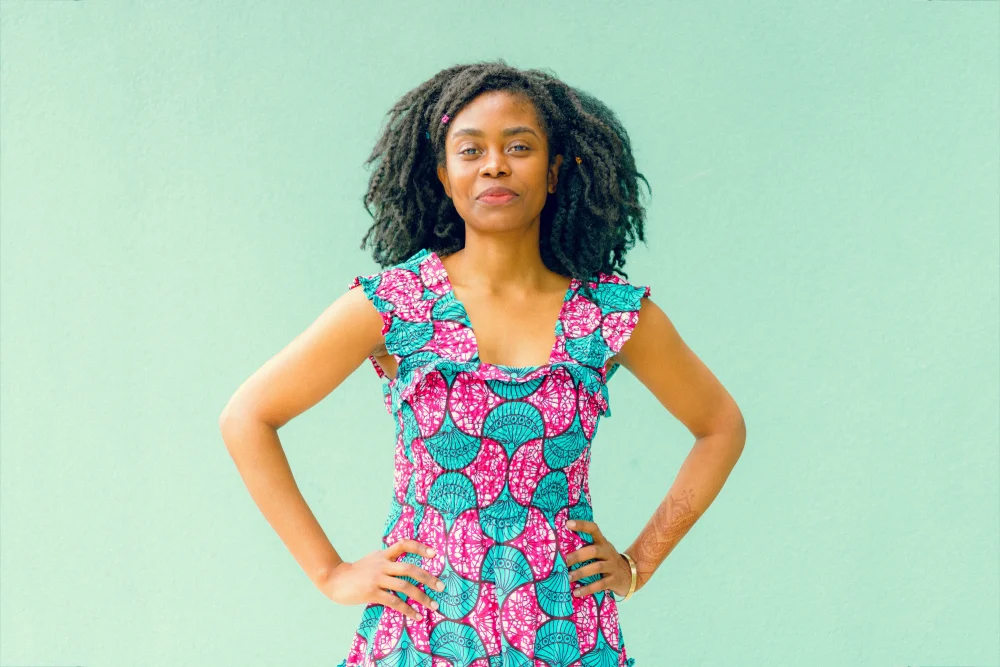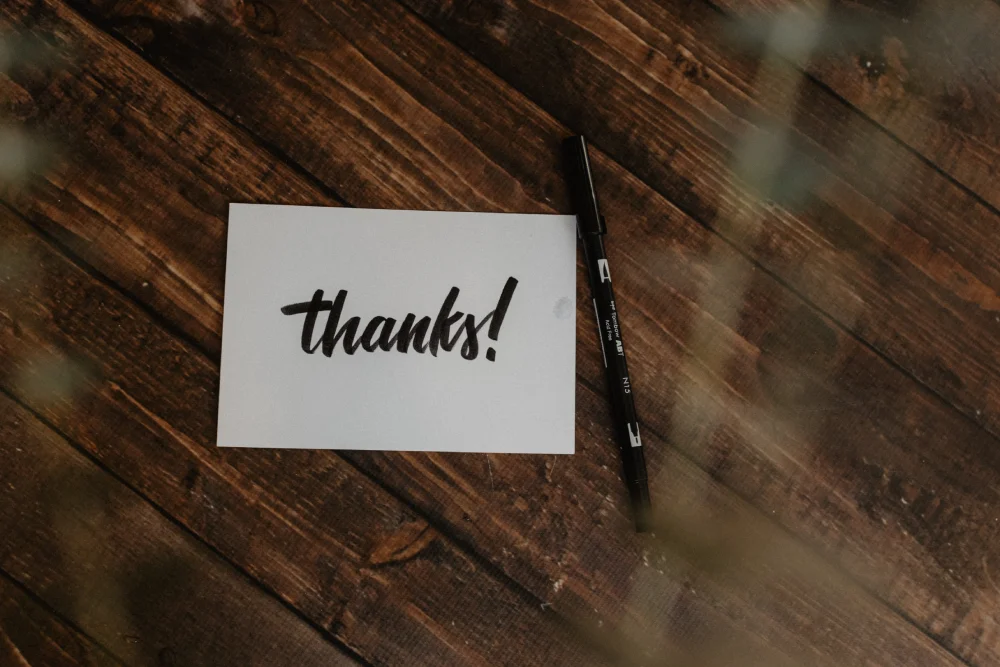There are many different paths people take to become parents, some longer and filled with more obstacles than others. Growing up as the eldest of his three children, Joy Woodson developed a sense of compassion for others. She knew from an early age that she would one day seek adoption as a means to become her mother, but never in her wildest dreams did she think that it would be the only way to have a child.
In constant debilitating pain, Woodson realized something was wrong with her reproductive health and was eventually diagnosed with endometriosis, PCOS, and uterine fibroids. She was told that she would need professional help if she wanted to have children.
“When I joined the fertility clinic in 2015, I thought it would be easy, modern medicine and all. It wasn’t,” Woodson tells EBONY. “I tried many times to get pregnant, but nothing worked. I had several surgeries, but nothing worked. I took pregnancy tests every month, and every month they were negative. We always knew we would adopt a child, so it was an easy decision to forego fertility treatment and go down the path of providing a home for a child in need. I drew the line, but that was it.”
“I took pregnancy tests every month and they were negative every month. I always knew I would adopt, so the decision to step away from infertility treatment and pursue the child I wanted was easy.” is home. ”
joy woodson
Joy tried to adopt through the foster care system. But that didn’t work either. In 2020, as she was nearing the end of her adoption process as a teenager, a social worker knocked on her door without warning one Saturday morning.
“They took all of my child’s belongings, she was loaded into a burgundy four-door car, and I never saw her again. It was over. I had no money, no energy, or so I thought. My therapist encouraged me to try it again, so I did so in 2021. I withdrew funds from the equity in my home, started the private adoption process, and hired a consultant. It took 18 months. And I told them, “I’m only going to do this for one year.” If I don’t have a baby by May 2022, that’s it.” Woodson recalls.
I was matched with a pregnant woman in November 2021. Then in February, she received a call that her mother was on her way to the hospital to give birth. She was rushed from Georgia to Kentucky so that she could be in the same room as her birth mother to witness her labor and her birth.

“When my daughter was born, the nurse handed her to me, and we’ve been a team ever since. The adoption was made official in May, and we also decided on her new name.”
Woodson’s story ultimately had a happy ending, but the process was extremely difficult. A single black woman seeking to adopt, she was told from the beginning that she was a unicorn, as agencies typically see white couples seeking to adopt.
“Although it’s only recently that single parents have been allowed to adopt, there are still many agencies that won’t work with you unless you’re married,” Woodson says. “Or they purposely show the expectant mother the profiles of white couples. The birth mother who chose me said she only wanted me as her choice,” she said later. According to the agency, the agency kept pushing her to choose multiple families, and those families were mostly white couples. She wanted her child to be raised by a black woman, so she left me. I made a choice and stuck with that choice. Although the number of single black women who are choosing single motherhood and adoption is increasing, it is still not the norm.”
In addition to the tangible challenges, raising the funds necessary for the adoption was another obstacle Woodson had to overcome. Private adoptions can be very expensive because many professionals are involved, including attorneys, social workers, doctors, and agencies.
“And some pregnant women need a lot of financial help after their due date, which was the case with my child’s adoption. They don’t have any inherited wealth, or they don’t have a super-high-paying job. I couldn’t get a job, so I couldn’t have a stash of $40,000 to $50,000 for a rainy day. After I pulled stocks out of my house and secured the funds, a few things happened. , I had less than $30,000 in funding. I didn’t tell anyone, but I searched for grants on the Internet. To my surprise, I was able to secure a very unusual $20,000 grant. I’m very lucky. Without these grants, I wouldn’t have been able to pay all the costs.”
“Don’t get out of the driver’s seat. If being a mother is what you really want, speak up and say what you want. Work towards it.”
joy woodson
After adopting her daughter, Woodson’s first year as a mother was difficult. The world was in the midst of the coronavirus disease (COVID-19) pandemic. She was juggling her 9 to 5 job and starting a business while being a new mom of an infant. She hardly slept and she was always exhausted.
“Your village doesn’t have to be 20 people, either. People who just chat, people who help with babysitting, people who pick up prescriptions for your dog, people who can help you, people who can vent your feelings. There are people out there who care. Find allies. It makes a difference,” she says.
“Another thing I keep telling people is don’t get out of the driver’s seat. If being a mother is what you really want, use your voice to say what you want. Go for it. Don’t let the failures of the adoption industry stop you from becoming a mother. Don’t listen to the naysayers. Whatever it is for you. If you do, it’s for you. Your child will find you. I always told myself this and I succeeded and my daughter fulfilled a deferred dream. I’m grateful.”





